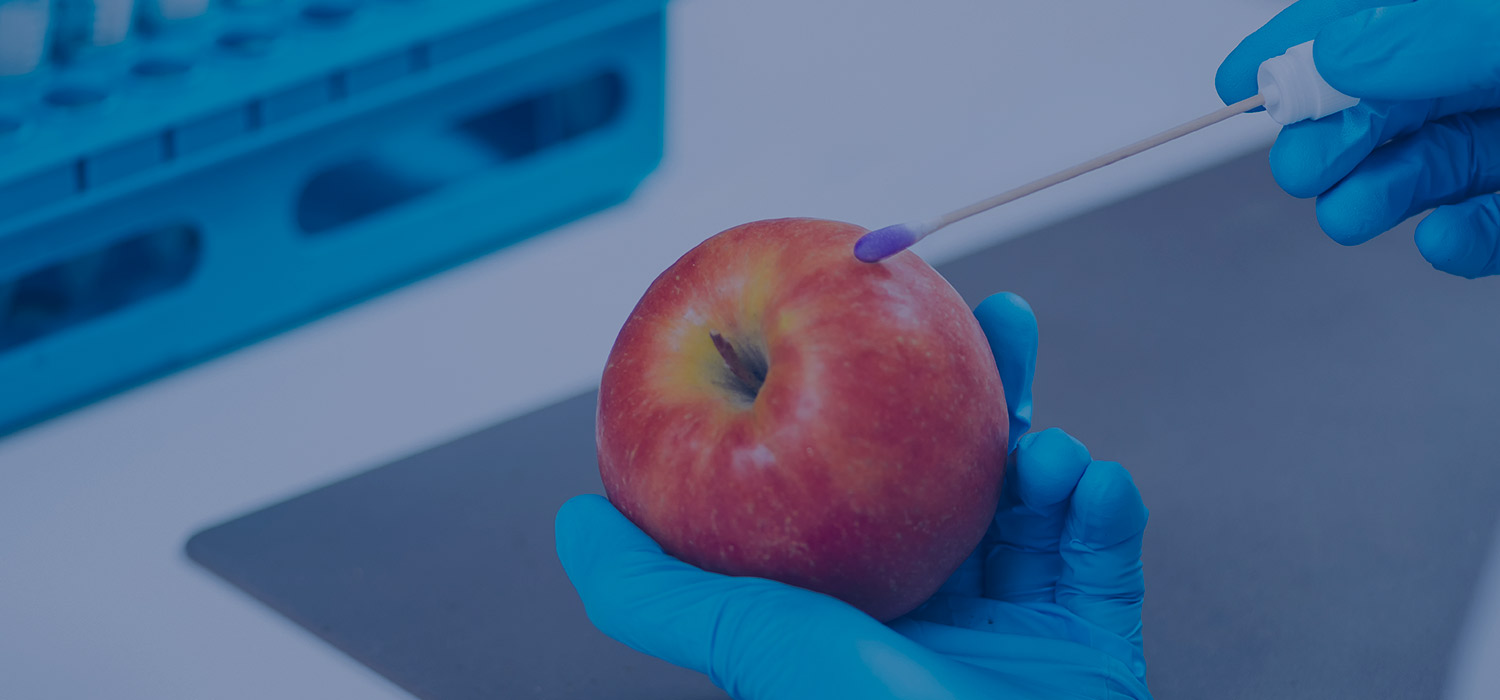The advanced instrumentation
Our chemical department is equipped with technologically advanced scientific instruments and equipment that allow us to use the most up-to-date instrumental analytical techniques, including:
- Gas chromatography (GC) with electron-capture detectors (ECDs) and flame ionisation detectors (FIDs)
- Gas chromatography-mass spectrometers (GC/MS) and gas chromatography-tandem mass spectrometers (GC/MSMS)
- Headspace gas chromotography-mass spectrometers (GC-HS/MS)
- High-performance liquid chromatography (HPLC) with DAD, RID, and FLUORESCENCE detectors
- Liquid chromatography–mass spectrometry (LC/MSMS)
- Ion chromatography (IC) and gel permeation chromatography (GPC)
- Inductively coupled plasma-mass spectrometry (ICP/MS)
- Atomic absorption spectrometry (AA)
- UV-VIS molecular spectrometry, and Fourier transform infrared spectroscopy (FTIR)
We pay special attention to the dairy sector at our dedicated laboratory, which is fully equipped with the most up-to-date equipment so that we can manage and address issues relating to the dairy sector and derivatives on a large scale.
Product analyses and quality controls
Our laboratory performs product analyses and quality controls to verify nutritional characteristics and ascertain the presence/absence of limited or forbidden substances. In particular we:
- Perform nutritional analyses to define the macro constituents of all types of foods (to two decimal points). We determine the proteins, complex carbohydrates, and simple sugars (monosaccharides, disaccharides and trisaccharides) of fats – which we break down into saturated, monounsaturated, and polyunsaturated fats, trans fatty acids, and omega fatty acids – in addition to cholesterol, dietary fibre, salt content (such as NaCl), and minerals (calcium, phosphorus, iron, magnesium, potassium, sodium, zinc, iodine)
- Calculate energy values expressed in kcals and kJ
- Draft nutrition and energy panels for the main target markets (Europe, USA, Canada, etc.)
- Calculate RDIs (Reference Daily Intake) and daily values in % to comply with the parameters in place for US labelling: calcium, phosphorus, iron, magnesium, zinc, and vitamins
- Characterise sugars (sucrose, glucose, lactose, galactose, and maltose, etc.)
- Determine water-soluble and fat-soluble vitamins (vitamins B1, B2, B3, B5, B6, B9, B12, vitamin A, vitamin E, and vitamin C)
- Establish quality and authenticity parameters for oils according to CEE Reg. 2568/1991, and subsequent amendments (acidity, peroxides, UV spectrophotometric analysis (K232, K270 and Delta-K), acid composition, sterols, etc.)
- Establish quality parameters for wines and musts (total, fixed and volatile acidity, pH, alcohol by volume, density and relative density at 20°C, ash, sulphur dioxide, total and reduced dry extract, methanol and reducing sugars)
- Characterise the composition of meat and derivatives (fats, protein, moisture, and collagen)
- Analyse solid impurities in foods (Filth Test)
- Additives and preservatives (sorbic acid, benzoic acid, sulphur dioxide and sulphites, formaldehyde, nitrites and nitrates, propionic acid, and lactic acid)
- Acidity regulators and antioxidants (ascorbic acid and citric acid, EDTA, etc.)
- Stabilisers (polyphosphates)
Veterinary drug research: substances with an anabolic effect (steroid hormones, natural hormones, β-agonists, thyroid hormones); antibacterial substances:
- Tetracyclines (chlortetracyclines, tetracyclines)
- Amphenicols (Chloramphenicol, Thiamphenicol, Florfenicol)
- Nitrofuran metabolites (Semicarbazide)
- Sulfamides (Sulfaquinoxaline, Sulfadiazine, Sulfadimethoxine, Sulfamerazine, Sulfamethoxypyridazine, Sulfathiazole)
- β-lactam (Amoxicillin, Ampicillin, Penicillin)
- Macrolides (tylosin, erythromycin, spiramycin)
- Fluoroquinolones (danofloxacin, enrofloxacin, sarafloxacin)
- Allergen testing (gluten, sulphur dioxide (SO2), celery, etc.)
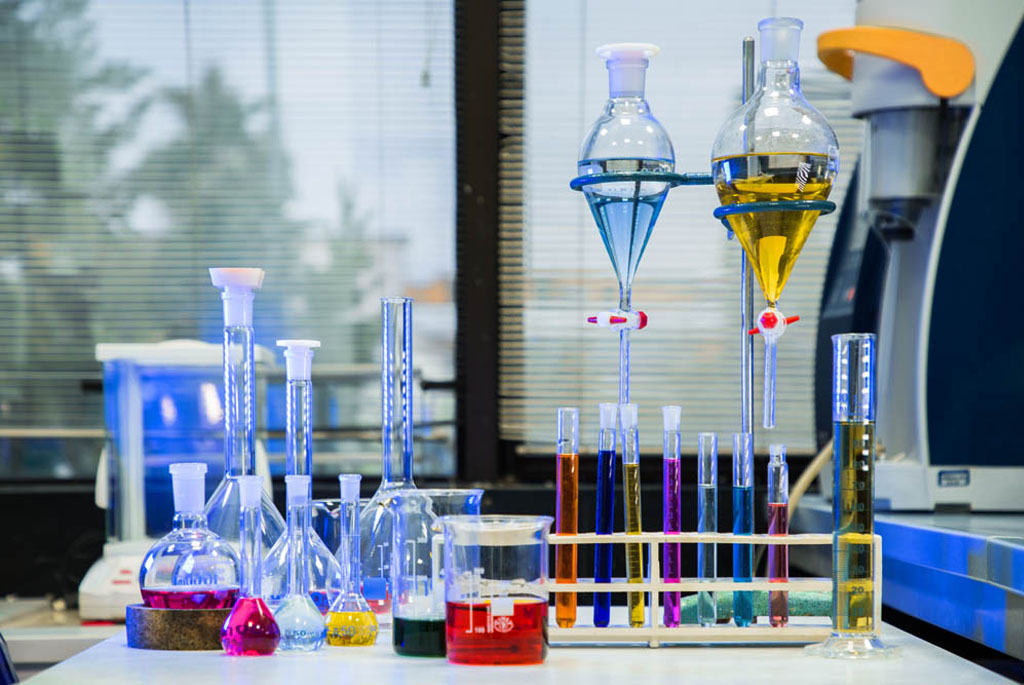
Chemical-physical parameters and the composition of milk
- Fat, protein, casein, lactose, cell count, testing for inhibitory substances, cryoscopy, pH, sH acidity, chlorides, sodium, potassium, calcium and magnesium, alcohol test, total and reduced dry residue, density (specific mass), enzymatic activity, urea, Total fatty acids, somatic cells, ammonia
- Monitoring of geometric mean somatic cell counts per Reg. 853/2004, and subsequent amendments
- Characterisation of nitrogen fractions (protein nitrogen (PN) and non-protein nitrogen (NPN), casein nitrogen (NC), and non-casein nitrogen (NCN)
- Enzymatic indicator testing to assess heat treatment (alkaline phosphatase, peroxidase)
- Determination of heat treatment indicators (lactulose, furosine)
- Triglycerides (purity of milk fat in milk products)
- Assessment of yield and aptitude for cheese-making
- Testing for species in milk and dairy products (cattle, sheep, goats, and buffalo)
- Cheese compositions to two decimal points (moisture, ash, ash alkalinity, pH, fats and proteins, total dry residue, chlorides, and salt (such as NaCl)
- Lactose in lactose-free products
- Hydrogen peroxide testing
- L-Lactic acid
- Acido L-Lattico
- Testing of fermentation metabolites (lactic, citric, butyric, and propionic acid, etc.)
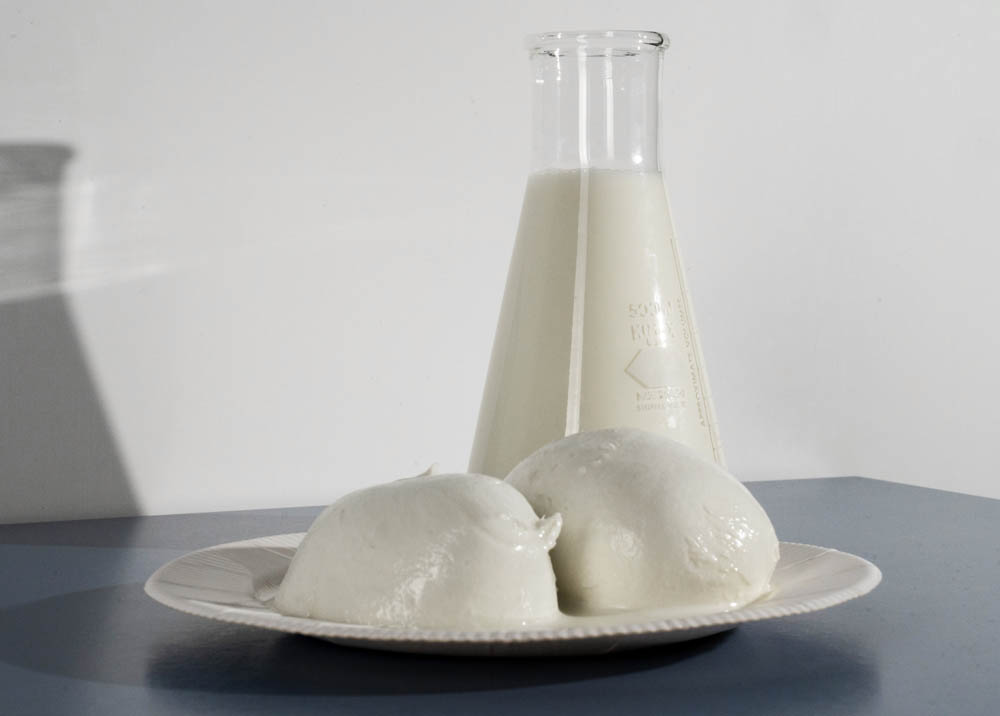
Analysis of environmental and anthropogenic contaminants
Analysis of anthropogenic environmental contaminants (e.g., IPA, PCB, PBDE, organochlorine pesticides, etc.), emerging contaminants (e.g., pharmaceutical residues, perfluorinated compounds, next-generation pesticides, etc.), and their metabolites/transformation products.
- Organic micropollutants: polychlorinated dibenzo-dioxins (PCDDs) and polychlorinated dibenzofurans (PCDFs), polychlorinated biphenyls (PCBs), dioxin-like PCBs and similar non-dioxin PCBs
- Testing for volatile and non-volatile phenols
- Mycotoxins (aflatoxins, trichothecenes, ochratoxin A, zearalenone, fumonisins)
- Phthalates
- Acrylamide and Epichlorohydrin
- Melamine
- Total bromide
- Determination of disinfection products in water treatment (trialmethanes): chloroform, dibromochloromethane, bromodichloromethane, bromoform
- Radioactivity in drinking water
-
Polycyclic aromatic hydrocarbons (PAHs)
Heavy metals:
Aluminium (Al), Arsenic (As), Boron (B), Beryllium (Be), Cadmium (Cd), Cobalt (Co), Chromium (Cr), Copper (Cu), Iron (Fe), Manganese (Mn), Nickel (Ni), Lead (Pb), Selenium (Se), Thallium (Ti), Vanadium (V), Zinc (Zn), Mercury (Hg)
- Testing for volatile organic substances (VOSs), chlorinated solvents and aromatic solvents, such as:
Benzene, Toluene, Ethyl benzene, Xylenes, 1,2-Dichlorobenzene, 1,1,1-Trichloroethane, Carbon tetrachloride, Vinyl chloride, 1.2-Dichloroethane, Trichloroethylene, Tetrachloroethylene
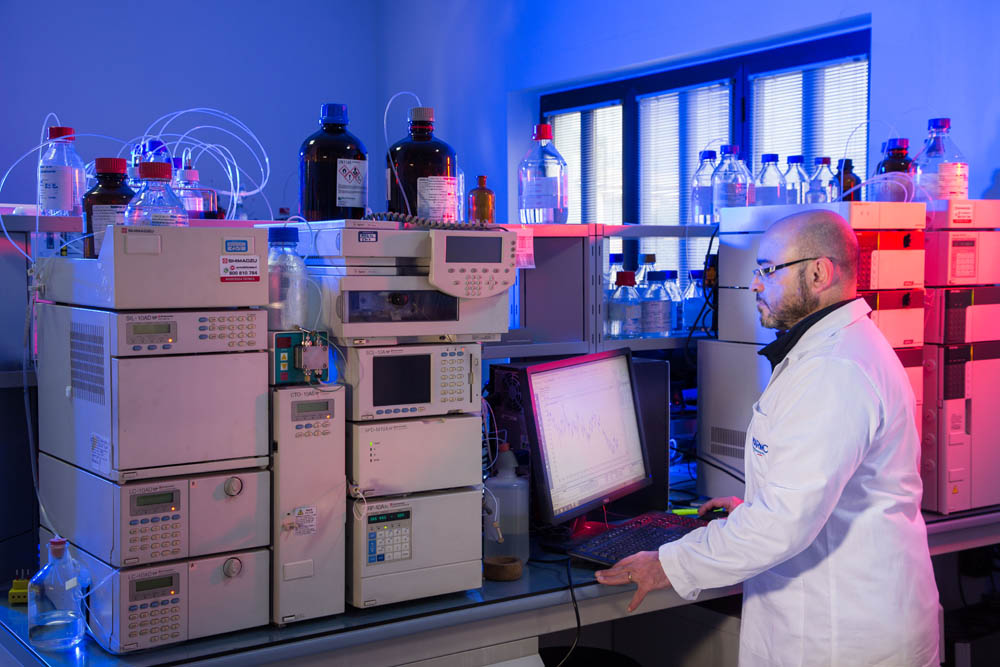
Multi-residue analysis – Phytopharmaceuticals, pesticides
Multi-residue analysis and individual methods on a total number of more than 800 active ingredients to comply with current legislation quickly, including in just 12 hours in the fruit and vegetable sector.
The main classes of pesticide residues we analyse include:
- Herbicides, fungicides, acetamide, benzimidazole, dicarboximides, heterocyclics, phenylamides, phosphorates, anilazines, nitrogen/aromatic, quinoxaline, thiophthalimide, triazole/pyridine, fumigants, phosphorus hematocides, pyrethroids and growth regulators
- Polar pesticides, glyphosate, fosetyl-al, etephon, chlorate, perchlorate, phosphonic acid and maleic hydrazide, chlormequat, mepiquat, matrine
- Carbamates
- Dithiocarbamates (such as CS2)
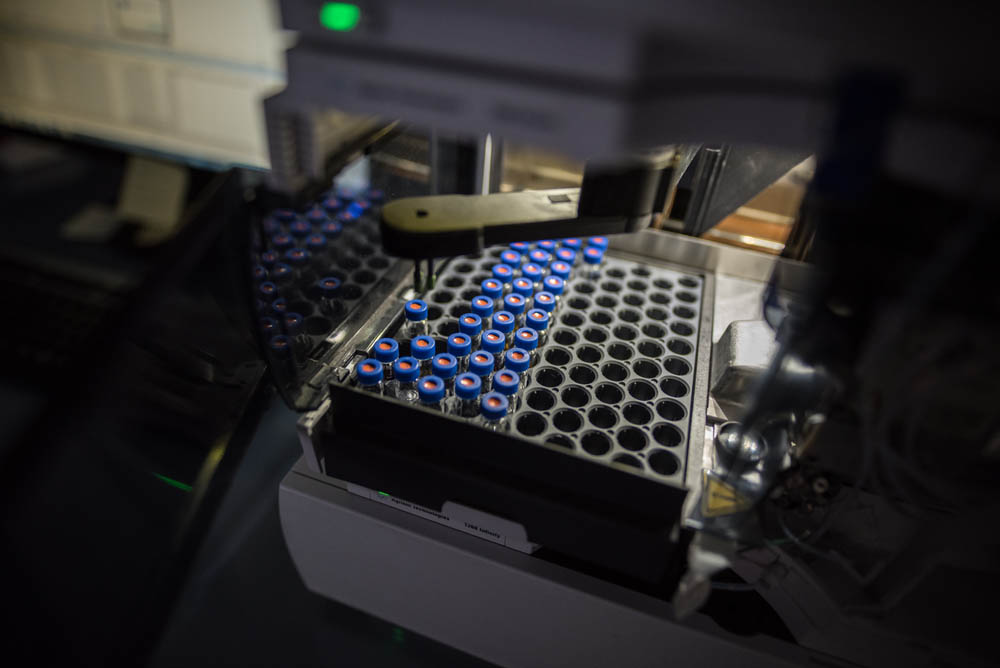
Composition and volatile compounds of food products
Marino provides analytical support and can test the aromatic composition and volatile compounds of food products. We test new formulations and identify organoleptic defects, as well as how aromatic profiles develop over time during a product’s shelf-life: – Determination of limited aromatic substances – Screening and characterisation of the volatile aromatic fraction of foods via GC/MS-SPME.
Quality control of mineral water and drinking water per Legislative Decree No. 31/2001, as amended and Ministerial Decree of 10 February 2015, implementing Directive 2009/54/EC for mineral and spring waters.
Below is a list of the main parameters we monitor:
- Alkalinity
- Ammoniacal nitrogen
- Free carbon dioxide at the source
- Total nitrogen
- Active and combined chlorine
- Chloride
- Colour
- Specific electrical conductivity
- Total hardness
- Phenol
- Fluoride
- Nitrates
- Nitrites
- Odour
- Oxidisability
- Dissolved oxygen
- pH
- Fixed residue at 180°C
- Taste
- Sulphates
- Sulphites
- Solfuri
- Turbidity
- Temperature
- Acrylamide
- Aluminium
- Pesticides
- Arsenic
- Boron
- Bromate
- Cadmium
- Cyanide
- Chlorite
- Vinyl chloride
- Tetrachloroethylene
- Trichloroethylene
- Total trihalomethanes
- Benzene
- Polycyclic aromatic hydrocarbons
- Bacterial load at 20°C
- Bacterial load at 37°C
- Coliform bacteria at 37°C
- Faecal coliforms
- Enterococci
- Mycetes counts and testing: filamentous fungi and yeasts
- Faecal streptococci
- Clostridium perfringens
- Sporigenic sulphite-reducing anaerobic bacteria
- Staphylococcus aureus
- Pseudomonas aeruginosa
- Salmonella spp
- Legionella spp and Legionella pneumophila


